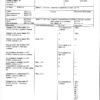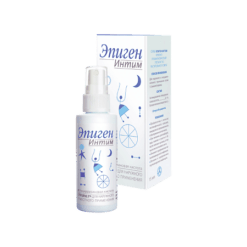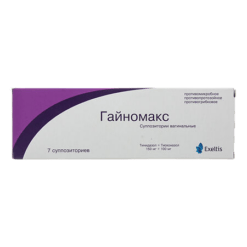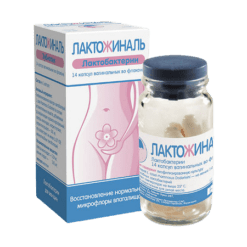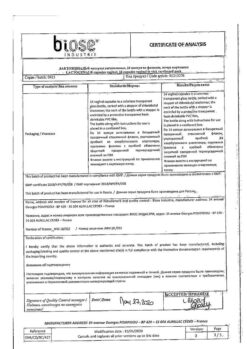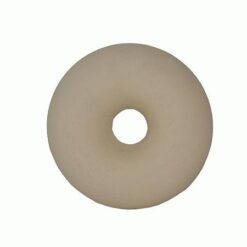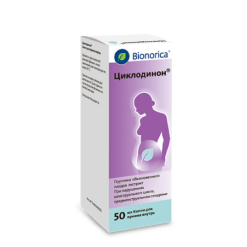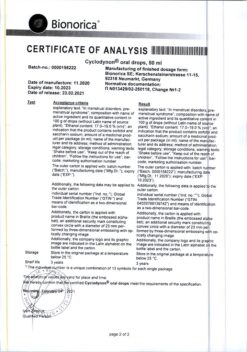No products in the cart.
Diane-35, 2 mg+0.035 mg 21 pcs
€35.48 €29.57
EAN: 4029668001842
SKU: 26509
Categories: Contraceptive, Gynecology and Obstetrics, Hormonal, Medicine
Description
Diane-35 is a combined low-dose monophasic oral contraceptive with antiandrogenic effect, containing estrogen – ethinyl estradiol and antiandrogen with gestagenic activity – cyproterone acetate.
The cyproterone acetate contained in Diane-35 inhibits the effect of androgens, which are also produced in the female body. This makes it possible to treat diseases caused by an increased production of androgens or specific sensitivity to these hormones.
Diane-35 reduces the increased activity of sebaceous glands, which plays an important role in the occurrence of acne and seborrhea. After 3-4 months of therapy this usually leads to the disappearance of the existing rash. Excessive greasiness of the hair and skin disappears even earlier. Hair loss, which often accompanies seborrhea, is also reduced. Diane-35 therapy in women of reproductive age reduces the clinical manifestations of mild forms of hirsutism; however, the effect of treatment should be expected only after several months of use.
In addition to the antiandrogenic effect described above, cyproterone acetate also has a pronounced gestagenic effect.
The contraceptive effect of Diane-35 is based on the interaction of various factors, the most important of which are inhibition of ovulation and changes in cervical mucus secretion.
The cycle becomes more regular, painful menstruation is less frequent, the intensity of bleeding decreases, and as a result the risk of iron deficiency anemia decreases.
Pharmacokinetics
Cyproterone acetate
Absorption
After taking Diane-35, cyproterone acetate is completely absorbed from the gastrointestinal tract. Bioavailability is 88%. After oral administration of 1 tablet of Diane-35, the Cmax is reached after 1.6 h and is 15 ng/ml.
Distribution
Cyproterone acetate is almost completely bound to plasma albumin, approximately 3.5-4.0% is free. Since binding to proteins is non-specific, changes in the level of globulin binding sex steroids (GSSB) do not affect the pharmacokinetics of cyproterone acetate. Up to 0.2% of the dose of cyproterone acetate is excreted with breast milk.
Metabolism and excretion
The pharmacokinetics of cyproterone acetate are biphasic; T1/2 is 0.8 hours and 2.3 days for the first and second phases, respectively. Total plasma clearance is 3.6 ml/min/kg. It is biotransformed by hydroxylation and conjugation, the main metabolite being the 15β-hydroxyl derivative. It is excreted mainly as metabolites in the urine and bile at a ratio of 1:2, a small part is excreted unchanged in the bile. T1/2 for cyproterone acetate metabolites is 1.8 days.
Ethinylestradiol
Intake
Ethinylestradiol is quickly and completely absorbed from the gastrointestinal tract after administration of Diane-35. During absorption and “first passage” through the liver, ethinylestradiol undergoes intensive metabolism, which leads to a bioavailability of about 45%, and its significant individual variability. After ingestion of 1 tablet of Diane-35, Cmax is approximately 80 pg/mL and is reached after 1.7 h.
Distribution
The binding to plasma proteins (albumin) is high (2% is free in plasma). Vd is approximately 5 l/kg. Up to 0.02% of the dose of ethinylestradiol is excreted in breast milk. Ethinylestradiol increases hepatic synthesis of HSPC and CRC (corticosteroid-binding globulin) during continuous administration. During treatment with Diane-35, the serum concentration of HSPC increases from approximately 100 nmol/L to 300 nmol/L and the serum concentration of CRC increases from approximately 50 µg/mL to 95 µg/mL.
Metabolism and excretion
The pharmacokinetics of ethinylestradiol are biphasic, with a T1/2 of 1-2 h (α-phase) and approximately 20 h (β-phase), respectively. Plasma clearance is about 5 ml/min/kg. Ethinylestradiol is excreted from the body as metabolites; about 40% is excreted in the urine, 60% in the bile.
Indications
Indications
Contraception in women with androgenization phenomena; androgen-dependent diseases in women: acne (especially its severe forms, accompanied by seborrhea, inflammatory phenomena with the formation of nodes / papular-pustular acne, nodular cystic acne /), androgenic alopecia and mild forms of hirsutism.
Pharmacological effect
Pharmacological effect
Diane-35 is a combined low-dose monophasic oral contraceptive with an antiandrogenic effect, containing estrogen – ethinyl estradiol and an antiandrogen with gestagenic activity – cyproterone acetate.
Cyproterone acetate contained in Diana-35 inhibits the influence of androgens, which are also produced in the female body. Thus, it becomes possible to treat diseases caused by increased production of androgens or specific sensitivity to these hormones.
While taking Diane-35, the increased activity of the sebaceous glands, which plays an important role in the occurrence of acne and seborrhea, decreases. After 3-4 months of therapy, this usually leads to the disappearance of the existing rash. Excessive oiliness in hair and skin disappears even earlier. Hair loss, which often accompanies seborrhea, is also reduced. Therapy with Diane-35 in women of reproductive age reduces the clinical manifestations of mild forms of hirsutism; however, the effect of treatment should be expected only after several months of use.
Along with the above-described antiandrogenic effect of cyproterone acetate, it also has a pronounced gestagenic effect.
The contraceptive effect of Diane-35 is based on the interaction of various factors, the most important of which are inhibition of ovulation and changes in the secretion of cervical mucus.
The cycle becomes more regular, painful menstruation is less frequent, the intensity of bleeding decreases, resulting in a reduced risk of iron deficiency anemia.
Pharmacokinetics
Cyproterone acetate
Suction
After taking Diane-35 cyproterone acetate, it is completely absorbed from the gastrointestinal tract. Bioavailability – 88%. After oral administration of 1 tablet Diane-35, Cmax is reached after 1.6 hours and is 15 ng/ml.
Distribution
Cyproterone acetate is almost completely bound to plasma albumin, approximately 3.5-4.0% is in the free state. Because protein binding is nonspecific, changes in sex steroid binding globulin (SGBS) levels do not affect the pharmacokinetics of cyproterone acetate. Up to 0.2% of the dose of cyproterone acetate is excreted in breast milk.
Metabolism and excretion
The pharmacokinetics of cyproterone acetate is biphasic, T1/2 is 0.8 hours and 2.3 days, respectively, for the first and second phases. Total plasma clearance is 3.6 ml/min/kg. Biotransformed by hydroxylation and conjugation, the main metabolite is the 15β-hydroxyl derivative. It is excreted mainly in the form of metabolites in urine and bile in a ratio of 1:2, a small part is excreted unchanged in bile. T1/2 for cyproterone acetate metabolites is 1.8 days.
Ethinyl estradiol
Suction
After taking Diane-35, ethinyl estradiol is quickly and completely absorbed from the gastrointestinal tract. During the process of absorption and “first pass” through the liver, ethinyl estradiol undergoes intensive metabolism, which causes a bioavailability of approximately 45% and its significant individual variability. After oral administration of 1 tablet Diane-35, Cmax is approximately 80 pg/ml and is achieved after 1.7 hours.
Distribution
Binding to proteins (albumin) in blood plasma is high (2% is found in free form in plasma). Vd is approximately 5 l/kg. Up to 0.02% of the ethinyl estradiol dose is excreted in breast milk. Ethinyl estradiol increases the hepatic synthesis of SHBG and CSG (corticosteroid binding globulin) during continuous use. During treatment with Diane-35, the serum SHG concentration increases from approximately 100 nmol/l to 300 nmol/l and the serum concentration of DSG increases from approximately 50 μg/ml to 95 μg/ml.
Metabolism and excretion
The pharmacokinetics of ethinyl estradiol is biphasic, with T1/2 1-2 hours (α-phase) and approximately 20 hours (β-phase), respectively. Plasma clearance is about 5 ml/min/kg. Ethinyl estradiol is excreted from the body in the form of metabolites; about 40% – with urine, 60% – with bile.
Special instructions
Special instructions
If any of the conditions/risk factors listed below currently exist, the potential risks and expected benefits of treatment with Diane-35 should be carefully weighed in each individual case and discussed with the woman before she decides to start taking the drug. If any of these conditions or risk factors worsen, intensify, or appear for the first time, a woman should consult her doctor, who may decide whether to discontinue the drug.
Diseases of the cardiovascular system
There is evidence of an increased incidence of venous and arterial thrombosis and thromboembolism (such as deep vein thrombosis, pulmonary embolism, myocardial infarction, stroke) when taking combined oral contraceptives.
The risk of developing venous thromboembolism (VTE) is greatest in the first year of taking such drugs. Estimated incidence of VTE among women taking low-dose oral contraceptives (
The risk of thrombosis (venous and/or arterial) and thromboembolism increases:
with age
in smokers (with increasing number of cigarettes or increasing age, the risk further increases, especially in women over 35 years of age);
if available:
family history (i.e., venous or arterial thromboembolism ever in close relatives or parents at a relatively young age); in case of hereditary predisposition, the woman should be examined by an appropriate specialist to decide on the possibility of taking combined oral contraceptives;
obesity (body mass index more than 30 kg/m2);
dyslipoproteinemia;
arterial hypertension;
migraines;
heart valve diseases;
atrial fibrillation;
prolonged immobilization, major surgery, any leg surgery or major trauma. In these situations, it is advisable to stop using combined oral contraceptives (in the case of planned surgery, at least four weeks before it) and not to resume use for two weeks after the end of immobilization.
The possible role of varicose veins and superficial thrombophlebitis in the development of venous thromboembolism remains controversial. The increased risk of thromboembolism in the postpartum period should be taken into account. Peripheral circulatory disorders may also occur in diabetes mellitus, systemic lupus erythematosus, hemolytic uremic syndrome, chronic inflammatory bowel disease (Crohn’s disease or ulcerative colitis) and sickle cell anemia.
An increase in the frequency and severity of migraine during use of combined oral contraceptives (which may precede cerebrovascular events) may be grounds for immediate discontinuation of these drugs. • Tumors There have been reports of a slight increase in the risk of developing cervical cancer with long-term use of combined oral contraceptives. The connection with the use of combined oral contraceptives has not been proven.
Controversy remains regarding the extent to which these findings are related to screening for cervical pathology or to sexual behavior (lower use of barrier methods of contraception). The most significant risk factor for developing cervical cancer is persistent papilloma viral infection.
It was also found that there is a slightly increased relative risk of developing breast cancer diagnosed in women who used combined oral contraceptives. The increased risk gradually disappears within 10 years of stopping these drugs. Its connection with the use of combined oral contraceptives has not been proven. The observed increased risk may also be a consequence of earlier diagnosis of breast cancer in women using combined oral contraceptives. Women who have ever used combined oral contraceptives are diagnosed with earlier stages of breast cancer than women who have never used them. In rare cases, during the use of combined oral contraceptives, the development of liver tumors has been observed, which in some cases led to life-threatening intra-abdominal bleeding. If severe abdominal pain, liver enlargement, or signs of intra-abdominal bleeding occur, this should be taken into account when making a differential diagnosis.
Other states
Women with hypertriglyceridemia (if there is a family history of this condition) may have an increased risk of developing pancreatitis while taking combined oral contraceptives.
Although mild increases in blood pressure have been described in many women taking combined oral contraceptives, clinically significant increases have rarely been reported. However, if a persistent, clinically significant increase in blood pressure develops while taking combined oral contraceptives, these drugs should be discontinued and treatment of hypertension should be initiated.
Taking combined oral contraceptives can be continued if normal blood pressure values are achieved with antihypertensive therapy.
The following conditions have been reported to develop or worsen both during pregnancy and while taking combined oral contraceptives, but their relationship with taking combined oral contraceptives has not been proven: jaundice and/or pruritus associated with cholestasis; formation of gallstones; porphyria; systemic lupus erythematosus; hemolytic uremic syndrome; chorea; herpes during pregnancy; hearing loss associated with otosclerosis. Cases of Crohn’s disease and ulcerative colitis have also been described during the use of combined oral contraceptives.
Chloasma can sometimes develop, especially in women with a history of pregnancy chloasma. Women prone to chloasma should avoid prolonged exposure to the sun and ultraviolet radiation while taking combined oral contraceptives. Acute or chronic liver dysfunction may require discontinuation of combined oral contraceptives until liver function tests return to normal. Recurrence of cholestatic jaundice, which developed for the first time during pregnancy or previous use of sex hormones, requires discontinuation of combined oral contraceptives.
Although combined oral contraceptives may have an effect on insulin resistance and glucose tolerance, there is no need to change the therapeutic regimen in diabetic patients using low-dose combined oral contraceptives (
If a woman with hirsutism has recent or severe symptoms, a differential diagnosis should be made to identify the possible cause of the disease (androgen-producing tumor, adrenal enzyme deficiency).
Laboratory tests
Taking combined oral contraceptives may affect the results of some laboratory tests, including liver, kidney, thyroid, adrenal function, plasma transport protein levels, carbohydrate metabolism, coagulation and fibrinolysis parameters. Changes usually do not go beyond normal values.
Effect on the menstrual cycle
While taking combined oral contraceptives, irregular bleeding (spotting or breakthrough bleeding) may occur, especially during the first months of use. Therefore, any irregular bleeding should be assessed only after an adaptation period of approximately three cycles. If irregular bleeding recurs or develops after previous regular cycles, careful evaluation should be performed to rule out malignancy or pregnancy.
Some women may not develop withdrawal bleeding during a break from taking the tablets. If combined oral contraceptives are taken as directed, the woman is unlikely to be pregnant. However, if combined oral contraceptives have not been taken regularly before or if there are no consecutive withdrawal bleeds, pregnancy should be ruled out before continuing to take the drug.
Medical examinations
Before starting to use the drug Diane-35, a woman is recommended to undergo a thorough general medical and gynecological examination (including examination of the mammary glands and cytological examination of cervical secretions) and exclude pregnancy. In addition, disorders of the blood coagulation system should be excluded.
In case of long-term use of the drug, it is necessary to conduct control examinations every 6 months.
A woman should be warned that drugs like Diane-35 do not protect against HIV infection (AIDS) and other sexually transmitted diseases!
Impact on the ability to drive a car and equipment.
Not identified.
Active ingredient
Active ingredient
Cyproterone, Ethinylestradiol
Composition
Composition
Active ingredients:
ethinyl estradiol 35 mcg and cyproterone acetate 2 mg;
Excipients:
lactose monohydrate,
corn starch,
polyvidone 25,000,
magnesium stearate,
sucrose,
polyvidone 700,000,
macrogol 6000,
calcium carbonate precipitated,
talc,
glycerol 85%,
titanium dioxide,
iron oxide yellow,
iron oxide red,
montaglycol wax
Contraindications
Contraindications
thrombosis and thromboembolism, incl. history (deep vein thrombosis, pulmonary embolism, myocardial infarction, cerebrovascular disorders);
conditions preceding thrombosis (including transient ischemic attacks, angina pectoris);
diabetes mellitus complicated by microangiopathies;
the presence of severe or multiple risk factors for venous or arterial thrombosis;
diseases or severe liver dysfunction;
liver tumors (including history);
hormone-dependent malignant tumors, incl. tumors of the breast or genital organs (including in history);
uterine bleeding of unknown etiology;
pancreatitis (including a history), if it was accompanied by severe hypertriglyceridemia;
a history of migraine, which was accompanied by focal neurological symptoms;
lactation (breastfeeding);
pregnancy or suspicion of it;
hypersensitivity to the components of the drug.
Side Effects
Side Effects
From the endocrine system: in rare cases – engorgement, soreness, enlargement of the mammary glands and discharge from them, change in body weight.
From the reproductive system: in rare cases – intermenstrual bleeding, changes in vaginal secretion, changes in libido.
From the side of the central nervous system: in rare cases – headache, migraine, decreased mood.
From the digestive system: in rare cases – nausea, vomiting.
Other: in very rare cases – poor tolerance to contact lenses, allergic reactions, the appearance of age spots on the face (chloasma).
The listed side effects may develop in the first few months of taking Diane-35 and usually decrease over time.
Interaction
Interaction
Interaction of oral contraceptives with other drugs may lead to breakthrough bleeding and/or decreased contraceptive reliability. The following types of interactions have been reported in the literature.
Effect on hepatic metabolism: the use of drugs that induce liver microsomal enzymes can lead to an increase in the clearance of sex hormones. Such drugs include: phenytoin, barbiturates, primidone, carbamazepine, rifampicin; There are also suggestions for oxcarbazepine, topiramate, felbamate, ritonavir and griseofulvin and products containing St. John’s wort.
Effect on enterohepatic circulation: According to individual studies, some antibiotics (for example, penicillins and tetracyclines) may reduce the enterohepatic circulation of estrogens, thereby lowering the concentration of ethinyl estradiol.
While taking medications that affect microsomal enzymes, and for 28 days after their discontinuation, you should additionally use a barrier method of contraception.
While taking antibiotics (such as ampicillins and tetracyclines) and for 7 days after their discontinuation, you should additionally use a barrier method of contraception. If the period of using the barrier method of protection ends later than the pill in the package, you need to move on to the next package of Diane-35 without the usual break in taking the pill. Oral combined contraceptives may affect the metabolism of other drugs (including cyclosporine), which leads to changes in their concentrations in plasma and tissues.
Overdose
Overdose
No serious adverse events have been reported following overdose.
Symptoms that may occur in case of overdose: nausea, vomiting, spotting or metrorrhagia.
There is no specific antidote; symptomatic treatment should be carried out.
Storage conditions
Storage conditions
At a temperature not higher than 30°C. Keep out of the reach of children.
Shelf life
Shelf life
5 years. Do not use after expiration date!
Manufacturer
Manufacturer
Bayer Weimar GmbH & Co. KG, Germany
Additional information
| Shelf life | 5 years. Do not use after the expiration date! |
|---|---|
| Conditions of storage | At a temperature not exceeding 30 ° C. Keep out of reach of children. |
| Manufacturer | Bayer Weimar GmbH & Co. KG, Germany |
| Medication form | pills |
| Brand | Bayer Weimar GmbH & Co. KG |
Related products
Gynecology and Obstetrics
Buy Diane-35, 2 mg+0.035 mg 21 pcs with delivery to USA, UK, Europe and over 120 other countries.







